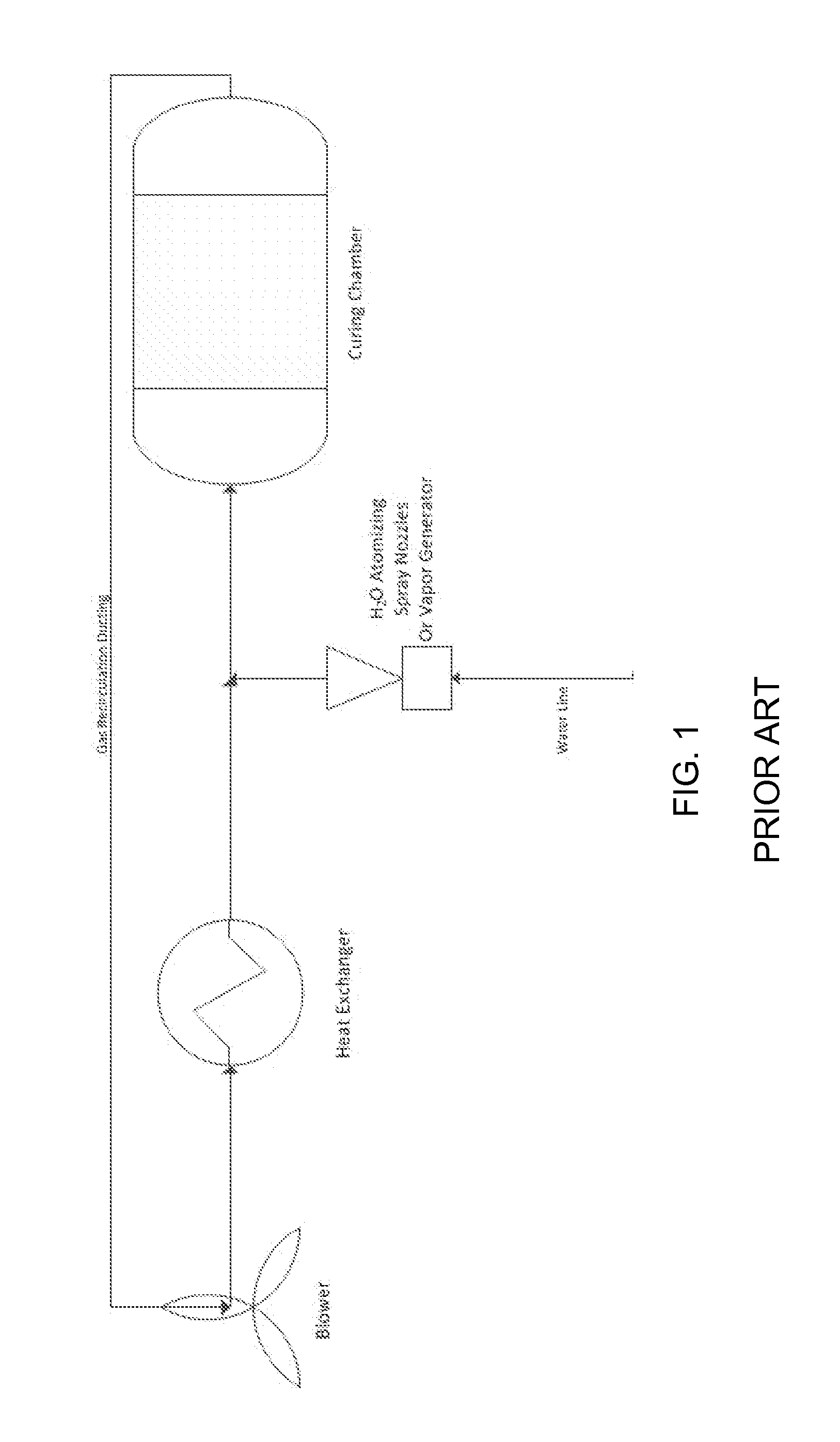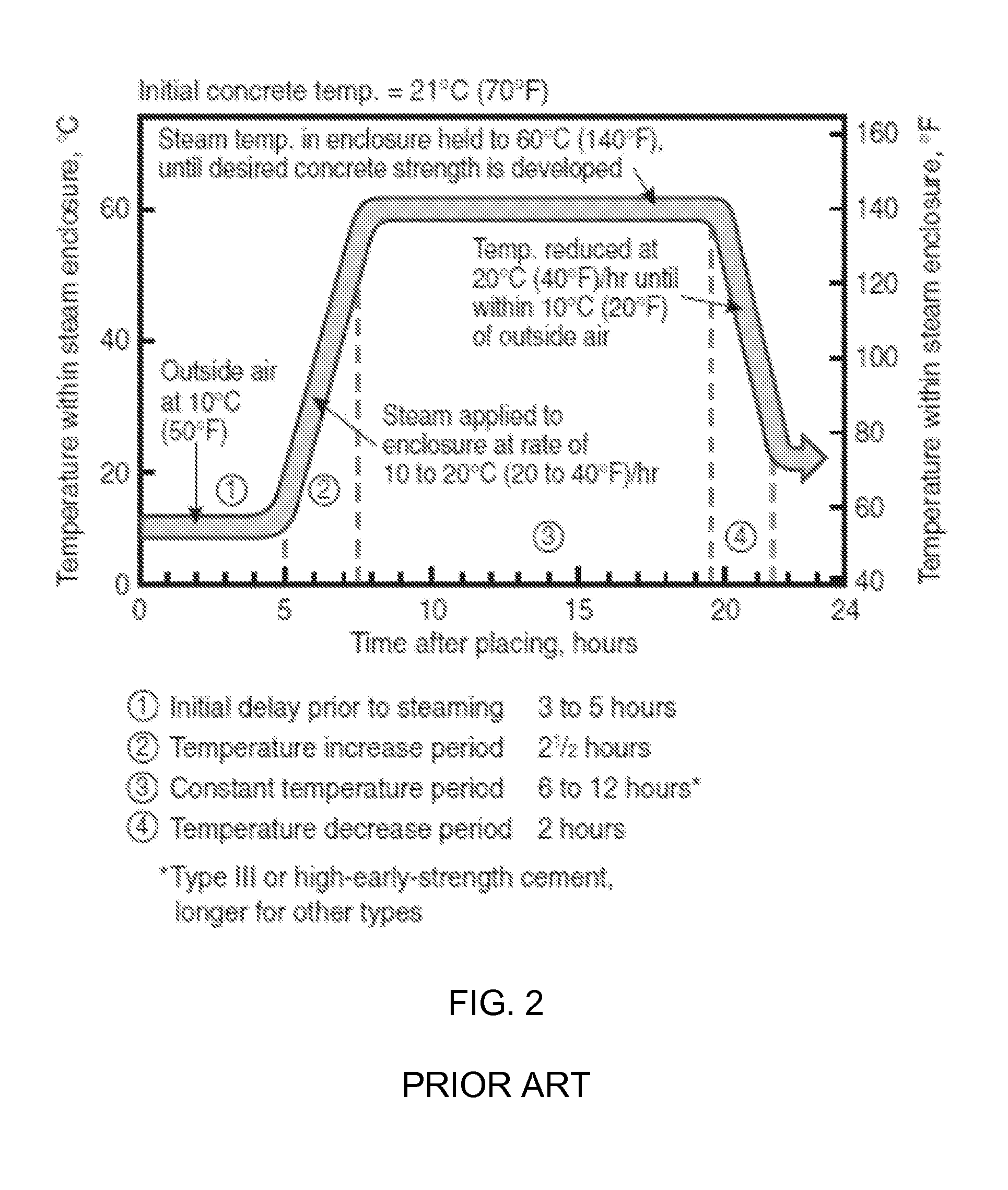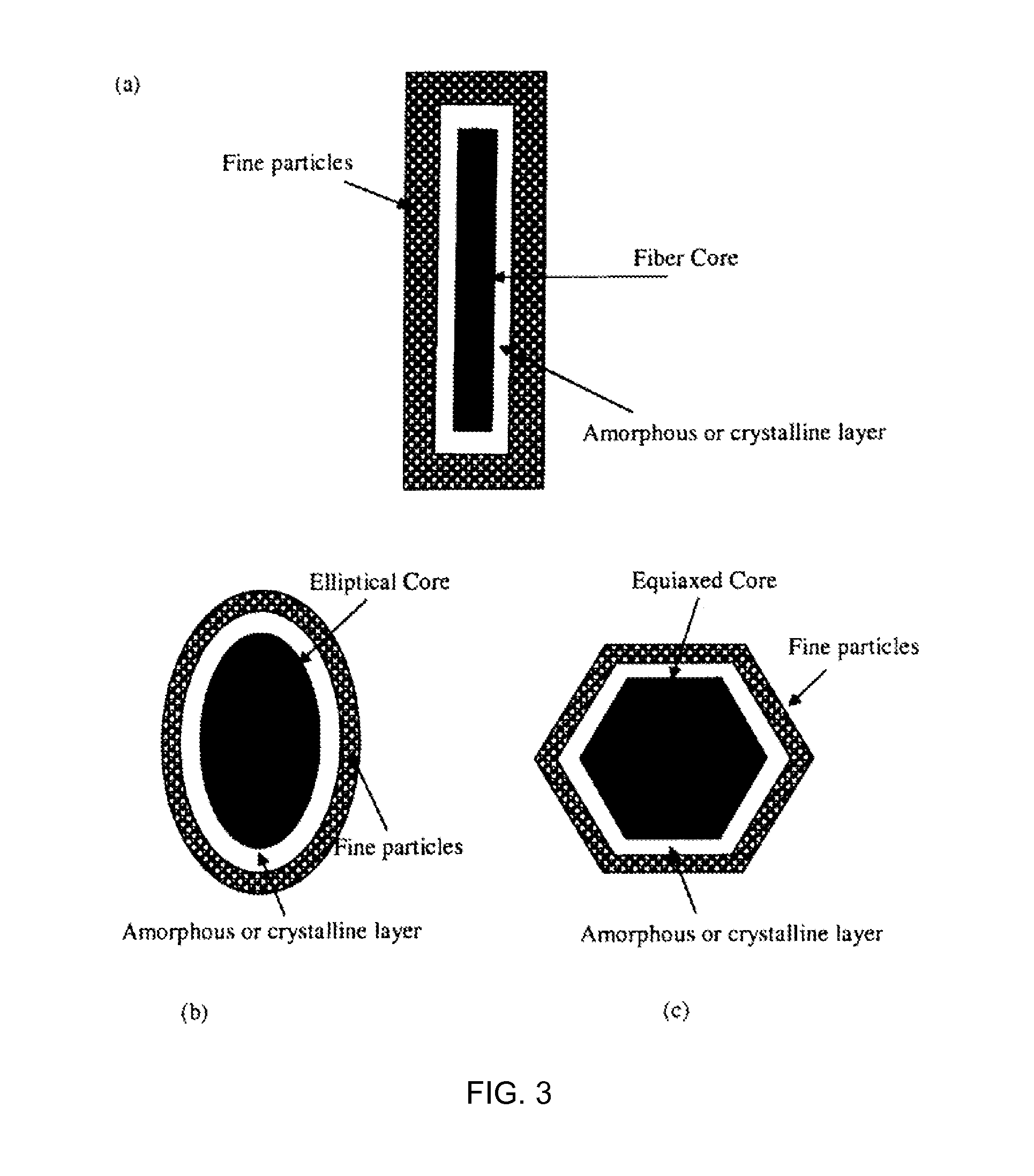Curing systems for materials that consume carbon dioxide and method of use thereof
a carbon dioxide and curing system technology, applied in the field of composite materials preparation systems, can solve the problems of lack of slate hardness, lack of fireproofness, and inability to produce synthetic materials that possess the desired appearance, and achieve the effects of increasing and reducing the humidity in the gas
- Summary
- Abstract
- Description
- Claims
- Application Information
AI Technical Summary
Benefits of technology
Problems solved by technology
Method used
Image
Examples
example 1
6-Inch by 9-Inch Pavers Cured in a Drum Reactor in a CO2 Atmosphere with Self-Generated Humidity
Raw Materials
[0199]Synthetic Wollastonite (SC-C2), Donghai Golden Resources Industries, Donghai, China; ¼″ trap rock aggregate from Stavola (NJ), construction sand from Bound Brook (NJ) and Glenium 7500 (BASF). Table 4 gives the mixture proportion of the raw material used to prepare the pavers.
TABLE 4Mixing Proportions (100 kg batch size)Solid Components:94.3%Synthetic Wollastonite (SC-C2) 18%17.1 kgConstruction sand55.2%52.2 kg¼″ aggregate26.8%25 kgLiquid Components: 5.7%Tap Water98.81% 5.632 kgGlenium 75001.19%0.068 kg
Mixing Procedure
[0200]1. Measure and load 25 kg of ¼″ aggregate into a planetary mixer (Sicoma™ MP375 / 250).[0201]2. Measure and load 55.2 kg of construction sand into the mixer.[0202]3. Measure and load 17.1 kg of Synthetic Wollastonite (SC-C2) mixer.[0203]4. Mix the solid components loaded into the mixer for approximately 3 minutes. This creates a dry mixture.[0204]5. Mea...
example 2
6-Inch by 9-Inch Pavers Cured in a Drum Reactor in a CO2 Atmosphere with Condensate Drainage for Dehumidification
[0211]Green ceramic bodies in the shape of pavers are prepared in the same manner as Example 1.
Curing Procedure
[0212]The curing process described in Example 1 is carried out while utilizing a solenoid valve on a timer (opens for 5 seconds every 10 minutes) at the bottom of the drum reactor as to remove condensate on the bottom of the reactor and therefore reduce humidity in the system over the course of the cure cycle. A time is used such that the system stays sealed and only intermittently bleeds condensate without bleeding very much gas out of the system. Liquid drain traps may be used but can be challenging to use due to the low gas pressures involved. During this the relative humidity is maintained in the area of 37-67%. After 20 hours, the flow of gas into the system is stopped and the lid is opened. The cured pavers are removed from the system and contain anywhere f...
example 3
6-Inch by 9-Inch Pavers Cured in a Drum Reactor in a CO2 Atmosphere with Added Humidity by Heating Water on the Bottom of the Chamber
[0213]Green ceramic bodies in the shape of pavers are prepared in the same manner as Example 1.
[0214]The curing process described in Example 1 is carried out wherein the bottom of the drum reactor equipped with a 1 kW immersion heater located at the bottom of the drum. The drum is filled with approximately 3-5 gallons of water, enough to cover the 1 kW immersion heater. The lid that contains a ½″ diameter orifice is sealed around the drum via a compression gasket ring. The fan is started, and a flow ranging from 200-500 L / min of CO2 is initiated, flowing through the system and exiting the ½″ orifice on the lid. After ten minutes, the flow of CO2 is stopped and the ½″ orifice is plugged with a low pressure relief fitting, exhausting any pressure that exceeds ½ PSIG. The heating jacket is controlled to regulate an internal gas temperature of the system a...
PUM
| Property | Measurement | Unit |
|---|---|---|
| size | aaaaa | aaaaa |
| size | aaaaa | aaaaa |
| compressive strength | aaaaa | aaaaa |
Abstract
Description
Claims
Application Information
 Login to View More
Login to View More - R&D
- Intellectual Property
- Life Sciences
- Materials
- Tech Scout
- Unparalleled Data Quality
- Higher Quality Content
- 60% Fewer Hallucinations
Browse by: Latest US Patents, China's latest patents, Technical Efficacy Thesaurus, Application Domain, Technology Topic, Popular Technical Reports.
© 2025 PatSnap. All rights reserved.Legal|Privacy policy|Modern Slavery Act Transparency Statement|Sitemap|About US| Contact US: help@patsnap.com



